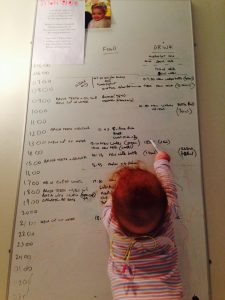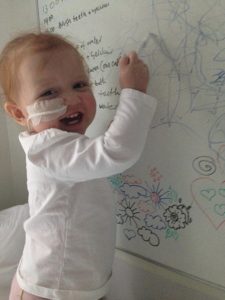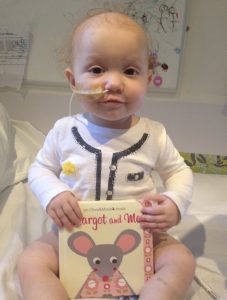 From tomorrow, schools are to close as the UK goes into lockdown, like so many other countries, in at attempt to slow down the spread of Covid-19.
From tomorrow, schools are to close as the UK goes into lockdown, like so many other countries, in at attempt to slow down the spread of Covid-19.
The last time our family had to contend with “isolation” was six years ago when Margot received her pre-bone marrow transplant conditioning. Thinking back to our experience during this time, there were some useful “do’s and don’ts” which I felt *might* be helpful to share.
For Margot, pre-transplant conditioning essentially involved a ‘lethal’ dose of chemotherapy, which destroyed all her bone marrow to make way for the new donor cells. Without her bone marrow, Margot had no immune system, so she was susceptible to infection (during this time, a common cold for her was a life threatening infection) and she needed to be isolated in her en-suite hospital room, for 8 weeks.
There were strict rules and procedures to limit Margot’s exposure to infection and Vicki, Izabela and I were the three nominated carers, by rotation, for a few days at a time (Margot was only 18 months old at the time).
From the outset, the nurses clear advice was for us to try and keep Margot active during isolation, and as far as possible to resist her being sedentary, ie just sitting in bed watching TV, because in their experience patient recovery is noticeably improved when patients remain “active”.
The nurses were referring to Margot being not only physically active (albeit limited to a single bedroom) but also mentally active. Mental and spiritual well-being is hugely important, especially during periods of isolation.
I suspect that there are parallels we can all draw.
I remember feeling daunted at the prospect of keeping a sick toddler busy in such a confined space and for such a long time, but once I had mentally surrendered & accepted my rota, during each of my shifts I found having a clear routine extremely helpful.
I also reflected on the positive fact that, whilst our family was temporarily split (Vicki and our boys were at home while Margot & I were in hospital), few people ever get to spend such quality time with their children and I regarded as that period as an opportunity to bond with Margot, in a special way, as father and daughter.
 Basically, having a basic daily plan (even if part way through the day you decide to junk it!) was a good way to structure each and every 24 hour stint and turning off electronics and properly engaging with doing the simple things was very helpful to retaining Margot’s focus and attention & ultimately my own sanity too !
Basically, having a basic daily plan (even if part way through the day you decide to junk it!) was a good way to structure each and every 24 hour stint and turning off electronics and properly engaging with doing the simple things was very helpful to retaining Margot’s focus and attention & ultimately my own sanity too !
Personally, I found the use of a white board very helpful as a constant reference / check point for the medicines that Margot needed to have at specific times during the day, as well as to monitor her eating and drinking (which was important for the medical team to understand).
In such circumstances, doing the basics well not only formed part of our daily routine but also helped break the monotony & pass the time.
Simple but necessary things grew in significance, such as cleaning Margot’s bed and metal bed frame with disinfectant wipes twice daily, wiping down her farm animal toys whilst playing & teaching her what each one was called, what noises they made, what they eat and so on. Involving Margot and explaining to her out loud what her regular body checks were for (eg looking for signs of skin rashes), tending to her general physical hygiene, mouth swabs, water intake and medicines and then carefully noting all this on the white board, which come bedtime, was a record of our daily achievements. It was exhausting but these were ultimately satisfying personal accomplishments.
Margot’s nap times and bedtimes were moments I really looked forward to; that was my “me time”. I could then have a proper wash, thinking time, communication with people outside our enclosed space (which I coveted), other than the doctors and nurses.
 To avoid complete boredom required a certain attitude and state of mind, exercise (as much as was possible within a confined space) and also some creative thought that for Margot stemmed from reading books and then talking and imagining.
To avoid complete boredom required a certain attitude and state of mind, exercise (as much as was possible within a confined space) and also some creative thought that for Margot stemmed from reading books and then talking and imagining.
All of this leads me to thinking that one of the many things that parents & their children *might* consider doing during isolation is to look at our online suite of education topics together and then talk amongst themselves as to how they feel about donation of:
Blood – you’ll see that there’s a video here, as well as other materials…
Organs – this module also has a specific section on “having the talk at home”
Stem cells – this is a short video on blood and stem cell donation and why “giving to help others” is something we should all think about…
For the “inbetweeners” – a book written for young teenagers, by a young teenager…
And much more !
Difficult times often bring out the best in people. Whatever you choose to do and however you decide to spend your time, I wish you & your family the best of luck over the next few weeks.
Team Margot
Together, saving lives
Husband to Vicki and father to Oscar (2007), Rufus (2008), Digby (2015), Humphrey (2017) & Margot (2012-2014)
Team Margot’s mission
To help save and improve lives by educating, inspiring and motivating people, especially from ethnically diverse communities, to register as blood, organ, stem cell and bone marrow donors and to provide a range of support to families caring for child cancer patients.
Team Margot also provides secretariat support to the All-Party Parliamentary Group for Ethnicity Transplantation and Transfusion.